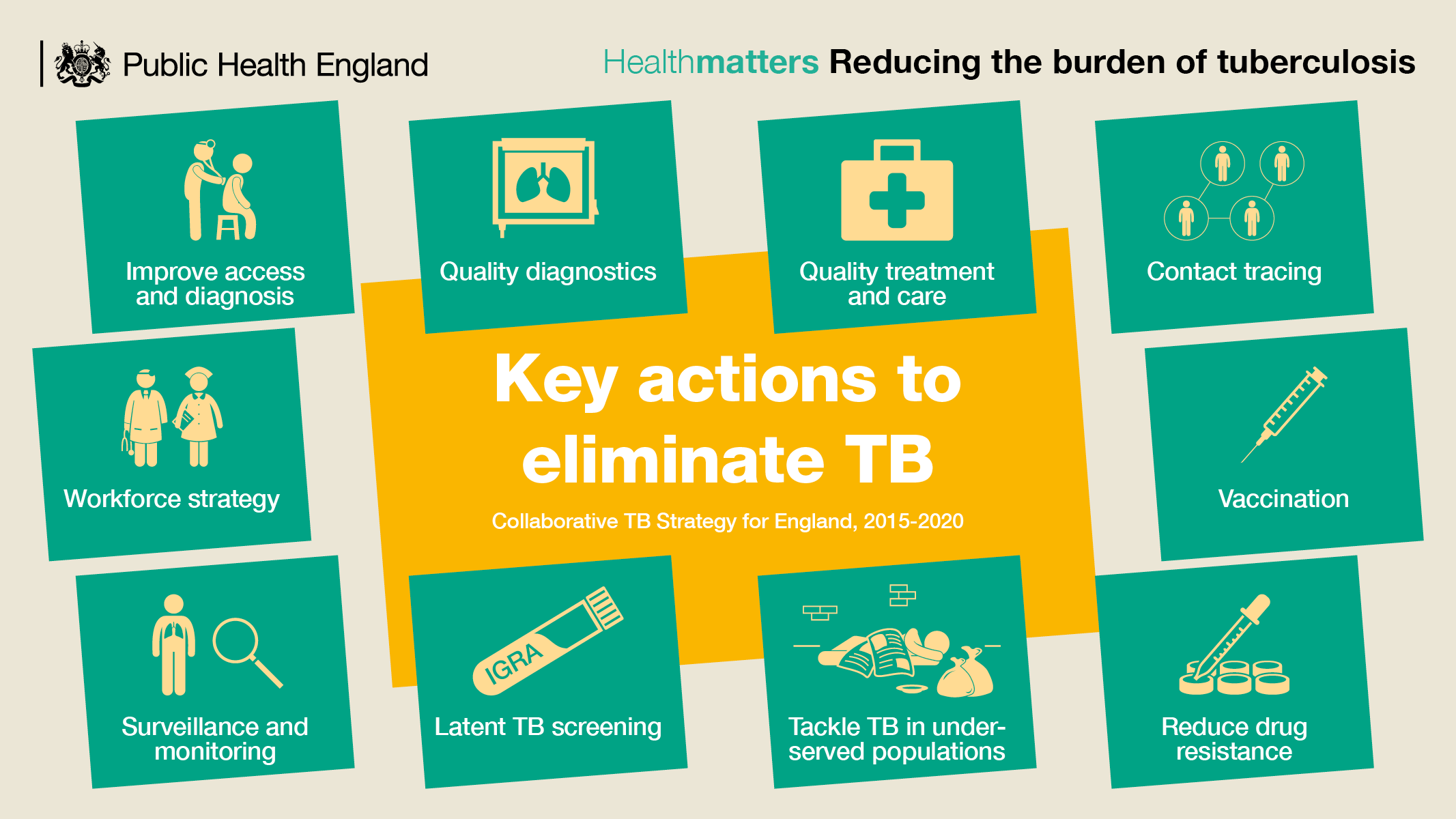
One of the key tools to help treat disease is having a fast and precise diagnostic method. In a world-first PHE is now using a technique that is set to change the face of diagnosing tuberculosis.
Whole genome sequencing (WGS) is now being used to identify strains of TB in patients to allow for faster and more accurate diagnosis, meaning patients can be treated with precisely the right medication more quickly.
Previously it could take up to a month to confirm a diagnosis of TB, provide a treatment plan and detect the spread between cases. But this can now be done in just over a week by PHE’s Birmingham laboratory.
Over the past four years there has been a 30% reduction in the number of tuberculosis cases in England – there were 5,758 confirmed cases in England in 2015, compared to 8,280 in 2011.
Despite all the collaborative work gone into bringing this number down, England still has one of the highest rates of TB in Western Europe, estimates the World Health Organisation.
Whole genome sequencing to identify TB
The technique, developed with Oxford University, allows for a quicker diagnosis to put patients on the right treatment plan. Some strains of TB are called ‘drug resistant’ which means they need to be treated differently compared to drug sensitive TB.
With WGS, patients who have a strain of TB resistant to specific drugs will receive the right medication from the start of their treatment. This will shorten the time that patients are infectious and so stop the spread and reduce the prevalence of drug-resistant TB and costs to NHS in hospital care.
Reducing health inequalities
In 2015, 12% of all TB cases in England had at least one social risk factor. This group of patients were twice as likely to be lost to follow-up and twice as likely to die as compared to TB patients without social risk factors.
To meet the needs of this group PHE launched tackling tuberculosis in under-served populations. This resource provides practical and comprehensive information to support TB Control Boards, their partners and TB stakeholders design and deliver multi-agency programmes to better meet the needs of under-served populations. Each chapter contains hyperlinked information and exemplars of good practice from across the country.
Under-served populations include:
- people who are homeless
- people who misuse drugs or alcohol
- people in contact with the criminal justice system
- people with mental health needs
- some migrants groups, including asylum seekers, refugees and those in immigration detention
Working together
Just under 40% of England’s TB cases live in London and a higher proportion of these are from the under-served groups listed above. Find and Treat is a specialist outreach team that takes TB control to the under-served, finds cases of active TB early and supports patients in completing treatment and being cured.
The team includes former TB patients, who work as peer advocates, specialist nurses, social and outreach workers, radiographers and expert technicians. Since 2005, Find and Treat has established a network across London of more than 200 front line partner health and social care services to tackle TB among homeless people, drug and alcohol users, vulnerable migrants and people who have been in prison.
Find and Treat use a mobile digital X-ray unit to screen almost 10,000 high-risk people in London every year and to assist management of outbreaks of TB nationally. In addition, the team supports TB services in London and beyond to manage more than 300 of the most socially complex cases every year.
TB strategy achievements
Tackling TB requires the coordinated action of many partners, working together across local authority, CCG and NHS boundaries. In 2015, PHE and NHS England launched the Collaborative TB Strategy for England.
Seven TB Control Boards to support the local delivery of the strategy were established in 2015, supported by a small National TB Office. The TB Control Boards each cover a defined geographical footprint and provide strong local leadership bringing together many stakeholders and supporting them to collectively improve local TB control.
The TB Control Boards have a wide-reaching role, including to plan, oversee, support and monitor all aspects of local TB control, including:
- clinical and public health services and workforce planning
- work closely with local clinical and TB networks and engage with other key stakeholders such as local government, CCGs, clinicians and the third sector
Now two years in, here is some of the progress made so far:
- TB Alert’s The Truth About TB website expanded with a new section for professionals and updated awareness raising literature
- Professional education resources for primary care updated - TB nurse slide set and Royal College GPs TB e-learning modules
- National TB Service Specification for commissioners issued
- 58 new entrant latent TB testing and treatment programmes rolled out and funded by NHS England
- TB nursing workforce review completed in 2015 and a TB nurse competency framework developed in 2016
- Healthmatters – reducing the burden of TB launched in October 2016 - included TB infographics, blogs, a slide set and a video
- TB Strategy Update newsletter published three times a year
More details are available in the 'World TB Day' TB Strategy Update; to subscribe please click here.
